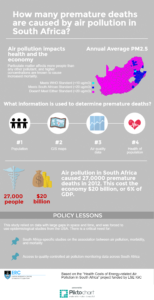Improving School Air Quality With Camfil Filters
Air Quality With Camfil Filters
Indoor air quality (IAQ) is critical to the educational and health of children, as it affects the performance of students, teachers, and staff. It also helps maintain students’ emotional and physical well-being. While the indoor air quality of schools varies widely, many factors affect IAQ. The level of carbon monoxide or nitrogen dioxide is one important indicator, while high levels of these pollutants increase the risk of respiratory infections.
The federal government does not have any standards for biological contaminants in indoor air environments, but many schools are subject to these pollutants. They may trigger allergic reactions and asthma in a large portion of the population. However, there are ways to mitigate these harmful contaminants and reduce their impact on the educational process. Fortunately, there are a number of solutions that can be applied to schools. To start with, there are several easy solutions to help improve indoor air quality.
Why Is Air Quality in Schools So Bad
A school’s air quality can also be affected by the vehicles that students ride. Using a school bus can lead to concentrated exposure to diesel exhaust because students are congregated at the same time. Additionally, students can face elevated levels of exposure from daily trips to and from school. Finally, schools are adding space and deferring maintenance to meet the increasing needs of students. This can result in poor ventilation and sources of pollution.

Improving School Air Quality With Camfil Filters
Some schools are particularly susceptible to indoor air pollution. Older buildings can develop leaks and water damage, which result in excessive moisture and dust. These conditions can increase the risk of developing allergies and other illnesses. In addition, schools located near major sources of pollution often have similar outdoor air quality challenges. EPA has enacted the Clean Air Act to address these problems. Its mandates schools to improve indoor air quality to protect the health of their students.
Indoor air quality is a major concern for urban schools and childcare facilities. In a recent study conducted by the National Institute of Environmental Health, UNICEF found that young children are particularly susceptible to pollutants. Overexposure to air pollution in childhood can cause respiratory health issues and even lung cancer. As a result, the United States Environmental Protection Agency and the British Lung Foundation have issued guidance to help schools improve indoor air quality. So, how can schools improve their indoor air quality?
There are many reasons why air quality is important in schools. In addition to exposure to outdoor emissions, poor ventilation results in high concentrations of harmful airborne particles and bacteria. For example, improper ventilation can lead to unhealthy respiratory conditions in students. Inappropriate indoor climates can have a negative impact on children’s development. Moreover, inadequate ventilation can lead to an increased risk of asthma and other diseases. The best way to combat indoor air pollution in schools is to improve the ventilation system.